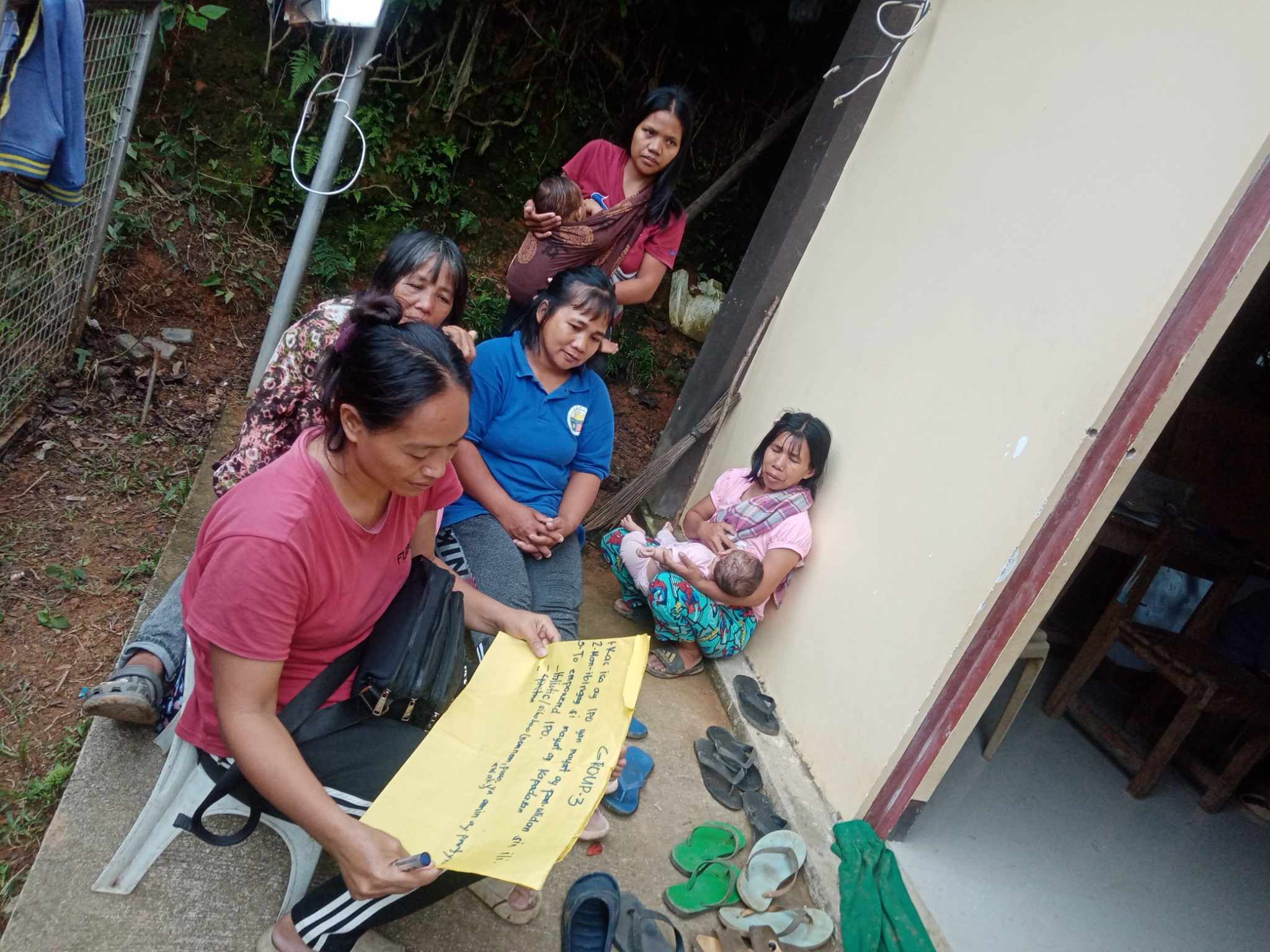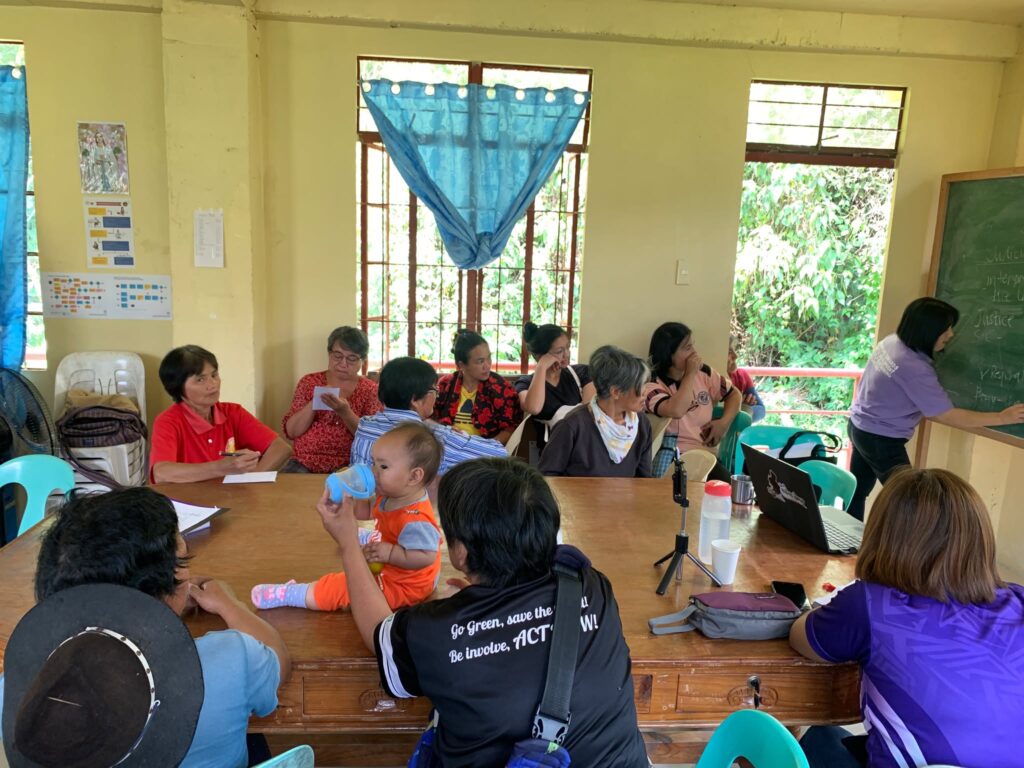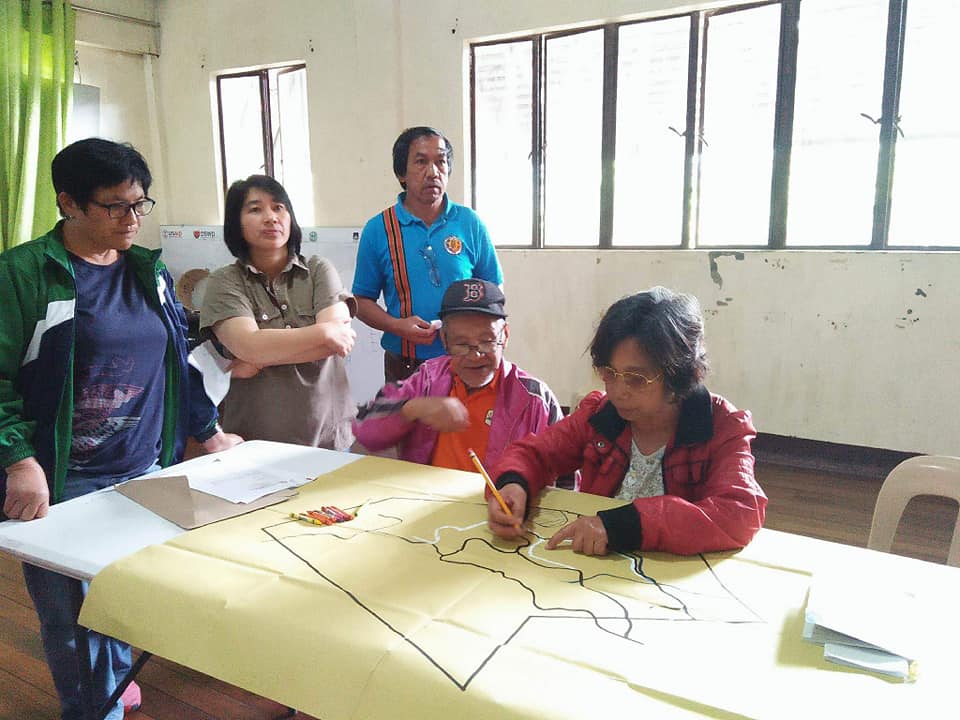Photo of women learning how to make ginger tea from women’s organizations in Benguet, Philippines, courtesy of Sr. Teresa Dagdag, MM
Easter Sunday
Sr. Teresa Dagdag
April 20, 2025
Acts 10:34a, 37-43 | Col 3:1-4 or 1 Cor 5:6b-8 | Jn 20:1-9 or Lk 24:1-12
People’s organizations have a way of witnessing the hope that things can get better with collaborative efforts. It was 38 years ago in Baguio City, Philippines, where I am writing this reflection, that an indigenous women’s organization was founded. Initially, the Women’s Desk for Indigenous Women’s Education and Organization was part of a social action diocesan program; a few years later, it was one of three programs told to fold up: that it would no longer be a part of the diocesan programs. From the depths of uncertainty and rejection, it took courage from the women to spend months of evaluating, re-directing, and planning to create a new structure for an organization that would keep going. And it took off. Today, this story is told and retold, giving witness to the hope that was born out of sheer disappointment and failure.
The Gospel reading on Easter Sunday is one such narrative that speaks of disappointment. Three people go to check in on Jesus, who was buried days earlier. Mary Magdalene goes to the tomb when it was still dark, looking for Jesus; she does not find his body, and this causes her much anxiety, thinking that someone, perhaps enemies, have disappeared the body. She runs to share her incredulous finding with Peter and John, who then went to the tomb to find out for themselves what happened.
What followed were moments spent looking for evidence. They found no dead body, but the cloths were there; John narrates that he saw the cloths formerly holding Jesus’ head and body laid securely in place. The disciple whom Jesus loved went in ‘and he saw and believed.’
In the first reading and the gospel, the words ‘saw’, ‘witness’, and ‘believed’ are expressions that suggest being directly present in Jesus’ life. Peter used ‘witnessed’ in the first Reading to describe what he saw Jesus do, healing and ‘doing good.’ Peter, John, and Mary went to the tomb and saw, but they had different responses. Mary Magdalene was anxious to find where Jesus had been taken. Peter saw, but he gave no clear reaction; could he be still processing what he saw? John, the third person, ‘saw’ what Peter saw and ‘believed’. Being the disciple whom Jesus loved, he connected what he heard Jesus say when he was still with them and remembered that he had told them about rising from the dead. Each of them had an unexpected, emotion-laden experience of the Jesus they could not find. These were persons who witnessed Jesus’ good works when he lived among them and suffered before dying on the cross. But resurrection was a different story!
Peter, the ever-present companion of Jesus, was the disciple who was always there but would make many statements in haste or truthfully expressing his feelings of fear and anxiety even while meaning well. In a most humiliating experience, Peter refused to admit that he was Jesus’ companion, as Jesus foretold, before the cock crowed. Peter also told Jesus not to go to Jerusalem when he said that the Son of Man will suffer, but Jesus reminds him that for Peter to prevent Jesus from fulfilling the Scriptures was tantamount to being like Satan to God’s plan. However, Peter was always quick to say sorry, and Jesus quickly forgave him.
There is a saying, ‘to see is to believe.’ This Gospel gives credence to it. There is something special in seeing. It involves the eye that sees a whole scene that Easter morning. The stone that blocked the burial cave to prevent intrusion was removed, as if to provide the space to a person who was buried in the tomb to come out alive!
These three went to tell the other disciples that Jesus rose from the dead. When unbelieving Thomas insisted that he would not believe that Jesus had risen from the dead, Jesus admonished him saying: “Because you have seen me, you have believed; blessed are those who have not seen and yet have believed.”
We are the people who did not see and yet believed. What caused us to believe without really seeing Jesus in his physical form? What moved us to faith in the absence of an encounter or a compelling reason to trust in the narrative of John? Or Luke in the Acts of the Apostles?
In religious life, members who join congregations years after their foundress’ death are persons who did not have actual experience of ‘seeing’. Many of us joined Maryknoll many years after Mother Mary Joseph’s time. Our vocation to the Maryknoll Sisters could not have come from what we ‘saw’ in our foundress’ life in the sense that we have not lived long enough to witness her during her earthly life. How did we ‘see’ and then ‘believe’?
We saw the power of witness in the sisters’ lives, of those who joined the Maryknoll Sisters before us; those lives have shown the power of the spirit that comes from the sisters who mirrored and witnessed our foundress’ life and values, transmitting these to the younger women who are search for meaning in their lives. The same must be true of others who have come to follow a particular religious charism, vision or mission.
What is the undeniable energy that attracts, that calls us to follow Jesus? For the disciples Peter and John, it took years of daily observation and working together that led them to go and find out what happened to the teacher whom they followed, healing the blind, the sick, and the possessed by evil spirits. Jesus had warned them that he had to suffer and die, his message did not falter in early on! The apostles were still startled not to find Jesus’ body in the tomb, though he told them he would rise again. They were familiar with the Scriptures that stated that he was to rise again, but they did not understand it yet.
For the women and men who joined Congregations and Societies, Jesus’ spirit of doing good works, of helping the poor and of bringing peace to the world, is an alluring pull!
For those who have joined organizations and groups that work for their well-being, work for the sustainable development of their members, for a healthy relationship between humans and the Earth, the attraction that pulls is that of Jesus’ love, which inspires many to do good, to heal, to bring about peace among peoples. Jesus’ love comes from the Father who knew him well and was pleased with him. We, too, sensing and knowing God’s love for us, follow Jesus’ mandate to go and baptize all nations.
Jesus’ resurrection is the one significant event in the lives of humanity. It defied all suffering and death; it made us ‘see and believe’ that resurrection is the last word in our lives, not suffering nor death. Let us heed Jesus’ call to go to the furthest points of the earth and share that experience of love and closeness with others so that they may also experience Jesus’ resurrection and live abundantly.
Photos of women in ancestral domain and voters’ education meetings organized by women’s organizations in Benguet, Philippines, courtesy of Sr. Teresa Dagdag, MM.




